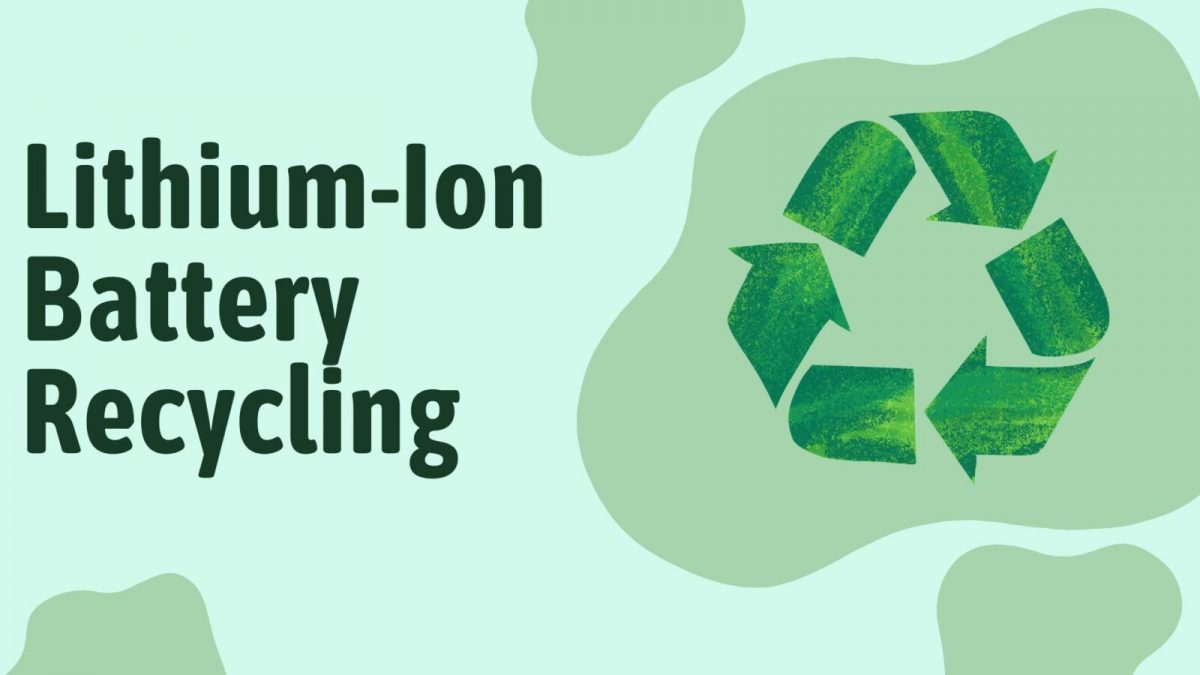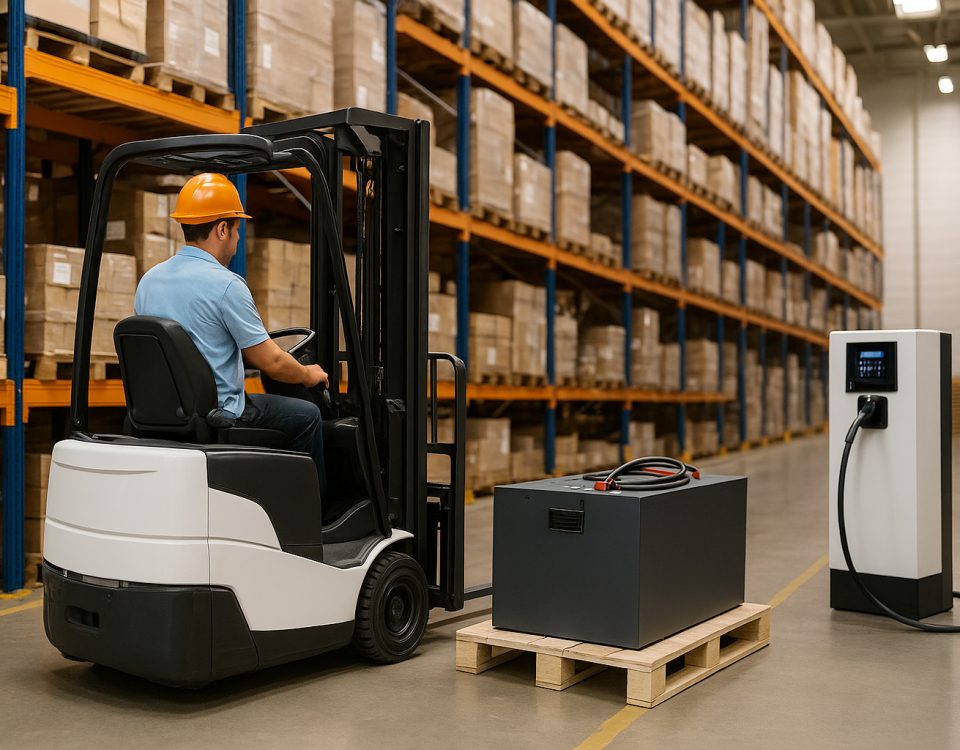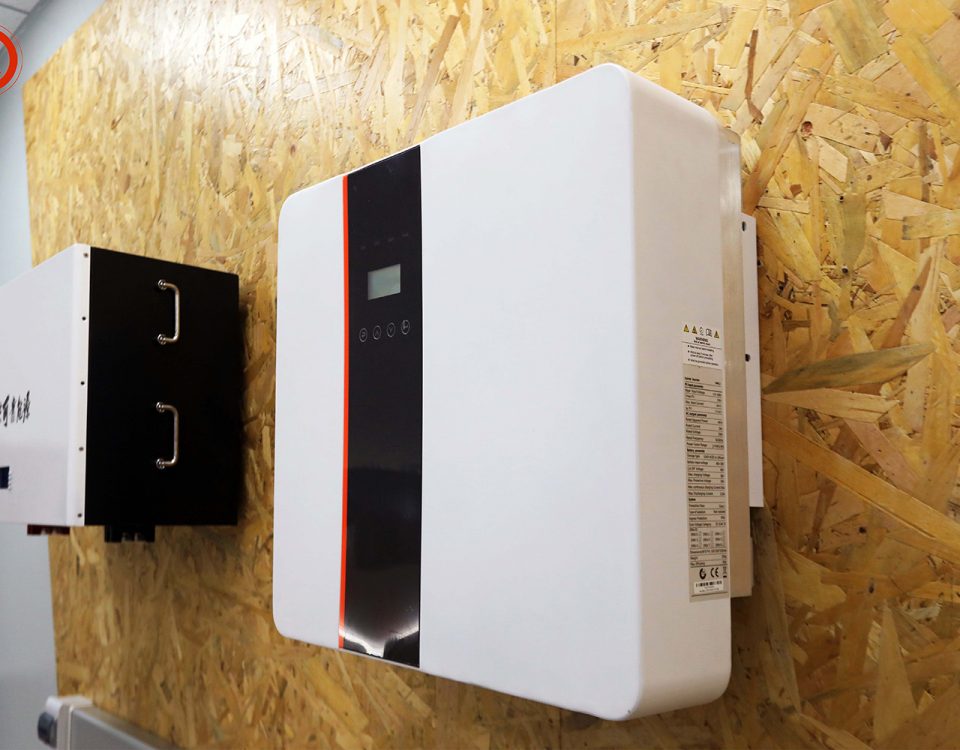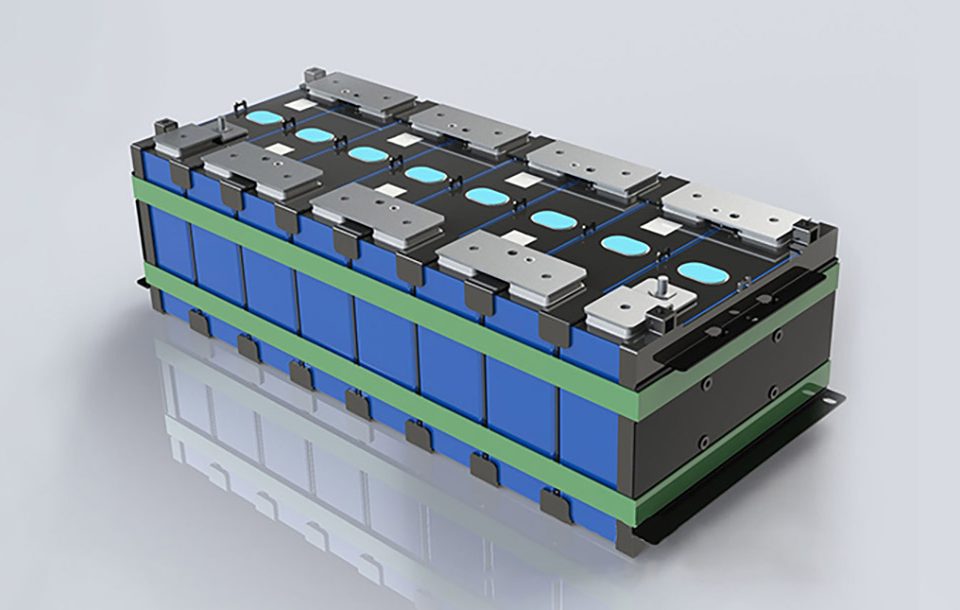Khi thế giới đang đẩy nhanh quá trình chuyển đổi sang năng lượng tái tạo và điện khí hóa, pin lithium-ion đã trở thành yếu tố then chốt thúc đẩy sự chuyển đổi này. Từ xe điện (EV) đến hệ thống lưu trữ năng lượng tái tạo, pin lithium-ion cung cấp năng lượng cho các công nghệ của tương lai. Tuy nhiên, khi các pin này hết tuổi thọ sử dụng, nhu cầu về các hệ thống tái chế hiệu quả chưa bao giờ cấp thiết hơn. Trong bài viết này, chúng ta sẽ tìm hiểu về tình trạng hiện tại của việc tái chế pin lithium-ion, tác động môi trường của nó và con đường phía trước hướng tới một nền kinh tế pin bền vững và tuần hoàn.
Sự trỗi dậy của pin lithium-ion: Con dao hai lưỡi
Pin lithium-ion, nổi tiếng với mật độ năng lượng cao, trọng lượng nhẹ và tuổi thọ dài, đã cách mạng hóa các ngành công nghiệp từ ô tô đến điện tử tiêu dùng. Theo Cơ quan Năng lượng Quốc tế (IEA), số lượng xe điện trên đường dự kiến sẽ tăng đáng kể, điều này sẽ dẫn đến sự gia tăng đột biến trong nhu cầu về pin lithium-ion.
Mặc dù việc áp dụng nhanh chóng các loại pin này là điều cần thiết để giảm phát thải khí nhà kính và chống biến đổi khí hậu, nó cũng đặt ra một thách thức riêng: điều gì sẽ xảy ra khi các loại pin này hết vòng đời?
Năm 2020, khoảng 7 triệu tấn pin lithium-ion Đã được xử lý trên toàn cầu, và con số này dự kiến sẽ tăng lên khi số lượng xe điện và hệ thống lưu trữ năng lượng tiếp tục gia tăng. Rác thải này có thể chứa các chất độc hại như coban, niken và lithium, và nếu không được xử lý đúng cách, chúng có thể gây ra những rủi ro nghiêm trọng cho môi trường.
Tình hình hiện tại của việc tái chế pin lithium-ion
Hiện nay, hệ thống cơ sở hạ tầng toàn cầu cho việc tái chế pin lithium-ion vẫn còn ở giai đoạn sơ khai. Ở các thị trường phát triển, chỉ một phần nhỏ pin được tái chế qua các kênh chính thức, phần còn lại hoặc bị chôn lấp trong bãi rác hoặc được xử lý một cách không chính thức, thường gây ra những hậu quả có hại.
Ở Hoa Kỳ và Châu Âu, một số Các phương pháp tái chế Tập trung vào việc chiết xuất các nguyên liệu quý như lithium, cobalt và nickel, nhưng các quy trình này có thể tốn kém và tiêu tốn nhiều năng lượng. Một quy trình điển hình Pyrometallurgy Phương pháp này, ví dụ, bao gồm quá trình nấu chảy ở nhiệt độ cao, có thể gây ô nhiễm môi trường nếu không được kiểm soát cẩn thận.
Tuy nhiên, những tiến bộ gần đây trong Thủy kim loại học Các kỹ thuật sử dụng dung dịch nước để chiết xuất kim loại đã cho thấy tiềm năng. Tái chế trực tiếp, công nghệ giúp bảo tồn cấu trúc hóa học của các thành phần pin để tái sử dụng, là một lĩnh vực nghiên cứu đang được quan tâm mạnh mẽ.
Mặc dù có những tiến bộ này, một thách thức quan trọng vẫn còn tồn tại: thiếu tiêu chuẩn hóa và quy định trong quá trình tái chế. Thiếu các hướng dẫn chung hoặc một chiến lược toàn cầu thống nhất, hiệu quả và hiệu suất của các nỗ lực tái chế vẫn còn hạn chế.
Những thách thức chính trong việc tái chế pin lithium-ion
-
Độ phức tạp trong thiết kế pin: Pin lithium-ion hiện đại có nhiều hình dạng, kích thước và thành phần hóa học khác nhau, khiến việc thiết lập một giải pháp tái chế chung cho tất cả các loại pin trở nên khó khăn. Ví dụ, pin được sử dụng trong xe điện có kích thước lớn hơn và thành phần hóa học khác biệt so với pin được sử dụng trong điện thoại thông minh hoặc laptop.
-
Thu gom và Vận chuyểnKhi pin lithium-ion già đi, chúng trở nên dễ bị rò rỉ các hóa chất độc hại hơn. Điều này đặt ra những thách thức về logistics trong việc thu gom, vận chuyển và tái chế an toàn cho chúng. Trong một số trường hợp, việc xử lý không đúng cách có thể dẫn đến hỏa hoạn hoặc các nguy cơ an toàn khác.
-
Khả năng kinh tếViệc tái chế pin lithium-ion thường không hiệu quả về mặt chi phí do yêu cầu năng lượng cao và quy trình phức tạp. Hiện nay, giá trị của các vật liệu thu hồi không phải lúc nào cũng bù đắp được chi phí tái chế, khiến việc vứt bỏ pin trở nên hấp dẫn hơn so với việc tái chế chúng.
-
Thiếu hụt cơ sở hạ tầngNhiều khu vực, đặc biệt là ở các nước đang phát triển, thiếu cơ sở hạ tầng và công nghệ cần thiết để tái chế pin lithium-ion một cách đúng đắn. Điều này dẫn đến việc phụ thuộc ngày càng nhiều vào các phương pháp tái chế không chính thức, thường thiếu các biện pháp an toàn cần thiết và gây hại cho cả người lao động lẫn môi trường.
Tầm quan trọng về môi trường và kinh tế của việc tái chế
Mặc dù có những thách thức này, tầm quan trọng của việc tái chế pin lithium-ion không thể được đánh giá thấp. Việc tái chế đúng cách không chỉ giảm thiểu tác động môi trường của quá trình sản xuất pin mà còn giảm nhu cầu về các nguyên liệu thô như lithium, cobalt và nickel, vốn được khai thác thông qua các quá trình khai thác mỏ có những vấn đề nghiêm trọng về môi trường và nhân quyền.
Ví dụ, việc khai thác cobalt, chủ yếu ở Cộng hòa Dân chủ Congo, đã được liên kết với lao động trẻ em, điều kiện làm việc tồi tệ và thiệt hại môi trường nghiêm trọng. Tái chế có thể giảm nhu cầu khai thác mỏ, từ đó giảm thiểu các vấn đề này.
Về mặt kinh tế, việc tái chế pin lithium-ion mang lại cơ hội để phát triển một ngành công nghiệp mới, bền vững. Thị trường toàn cầu về tái chế pin dự kiến sẽ đạt 1.500 tỷ USD vào năm 2030, mang lại những cơ hội lớn cho sự đổi mới, tạo việc làm và tăng trưởng kinh tế.
Tương lai của việc tái chế pin lithium-ion: Một tiếp cận theo mô hình kinh tế tuần hoàn
Để giải quyết các thách thức của pin lithium-ion Tái chế đòi hỏi một phương pháp tiếp cận mới—một phương pháp nhấn mạnh vào... Kinh tế tuần hoànTrong nền kinh tế tuần hoàn, các sản phẩm được thiết kế để tái sử dụng, tái chế và tái sản xuất, giúp giảm thiểu rác thải và hạn chế tác động đến môi trường.
Các yếu tố chính của phương pháp này bao gồm:
-
Thiết kế cho khả năng tái chếCác nhà sản xuất pin có thể nâng cao khả năng tái chế của sản phẩm bằng cách thiết kế chúng để dễ tháo rời và đảm bảo rằng các vật liệu tương thích với các quy trình tái chế hiện có. Điều này sẽ giảm đáng kể lượng năng lượng cần thiết để chiết xuất kim loại quý và giảm thiểu ô nhiễm môi trường.
-
Tiêu chuẩn hóa quy trình tái chếTiêu chuẩn hóa thiết kế pin và thiết lập các hướng dẫn chung cho việc tái chế có thể giúp tối ưu hóa quy trình, làm cho nó hiệu quả và tiết kiệm chi phí hơn. Ngoài ra, các tiêu chuẩn này có thể giúp dễ dàng hơn trong việc thiết lập hệ thống thu gom pin đã qua sử dụng.
-
Đầu tư vào công nghệ tái chế tiên tiếnCác chính phủ và doanh nghiệp tư nhân cần tăng cường đầu tư vào các công nghệ tái chế sáng tạo. Ví dụ, Hệ thống tái chế vòng kín Cho phép thu hồi và tái sử dụng các vật liệu như lithium và cobalt mà không cần phân hủy chúng thành các dạng nguyên liệu thô. Điều này không chỉ nâng cao hiệu quả tái chế mà còn giảm chi phí và tiêu thụ năng lượng.
-
Hợp tác và Chính sáchSự hợp tác giữa các nhà sản xuất, chính phủ và các tổ chức môi trường là yếu tố quan trọng để xây dựng một hệ sinh thái tái chế bền vững hơn. Chính phủ có thể đóng vai trò quan trọng bằng cách ban hành các quy định khuyến khích thiết kế pin có trách nhiệm, khuyến khích tái chế và xử phạt việc vứt bỏ không đúng cách.
RICHYE: Tiên phong trong sản xuất pin bền vững
Như một Nhà sản xuất pin lithium chuyên nghiệp, RICHYE cam kết sản xuất pin chất lượng cao, an toàn và bền vững. Công ty tập trung vào việc tạo ra các sản phẩm không chỉ hiệu quả mà còn được thiết kế với mục tiêu tái chế. Bằng cách đảm bảo tuổi thọ dài và tính tương thích với môi trường của pin, RICHYE đóng góp vào một tương lai sạch hơn, bền vững hơn.
Pin của RICHYE nổi bật về hiệu suất, chất lượng, an toàn và giá cả, khiến chúng trở thành lựa chọn đáng tin cậy cho các nhà sản xuất trong nhiều ngành công nghiệp. Cam kết của công ty về tính bền vững không chỉ dừng lại ở thiết kế sản phẩm mà còn bao gồm việc phát triển các quy trình tái chế sáng tạo và hợp tác với các tổ chức chuyên về việc xử lý pin một cách có trách nhiệm.
Kết luận: Một tương lai xanh hơn, tuần hoàn cho pin lithium-ion
Việc tái chế pin lithium-ion là yếu tố quan trọng để xây dựng một tương lai bền vững. Khi nhu cầu về loại pin này tiếp tục gia tăng, việc phát triển các hệ thống tái chế hiệu quả, tiêu chuẩn hóa và có tính kinh tế sẽ trở nên thiết yếu. Với những tiến bộ trong công nghệ, các quy định nghiêm ngặt hơn và sự chuyển đổi sang mô hình kinh tế tuần hoàn, tương lai của việc tái chế pin lithium-ion hứa hẹn nhiều tiềm năng.
Bằng cách chấp nhận những thay đổi này, chúng ta có thể giảm thiểu tác động tiêu cực đến môi trường, tạo ra những cơ hội kinh tế mới và đảm bảo rằng quá trình chuyển đổi sang năng lượng sạch không chỉ hiệu quả mà còn bền vững. Các công ty như RICHYE đang tiên phong trong việc sản xuất pin hiệu suất cao, thân thiện với môi trường, không chỉ cung cấp năng lượng cho tương lai mà còn giúp bảo vệ nó cho các thế hệ mai sau.




